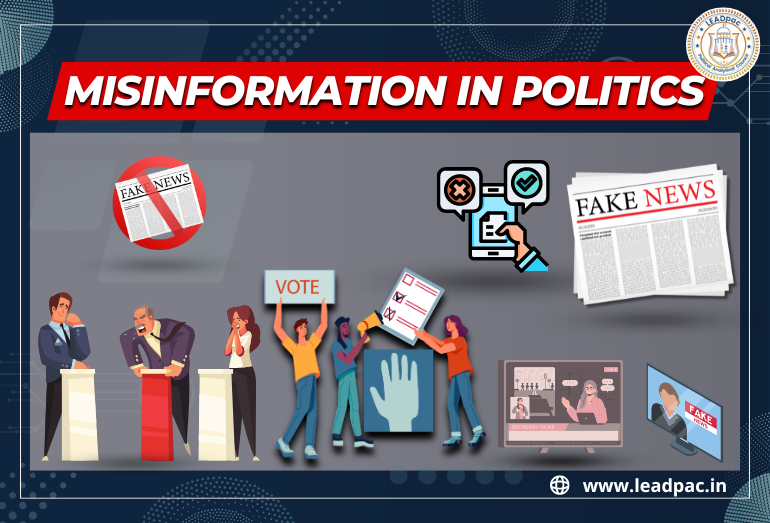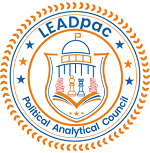Misinformation in Politics: A Political Analyst's Perspective

In the intricate world of politics, the battle for public opinion is fierce, and the stakes are high. One of the most insidious weapons in this battleground is misinformation. As a political analyst, it’s essential to understand how misinformation operates, its impact on political processes, and the strategies necessary to combat it.
The Mechanisms of Misinformation:
Misinformation in politics can take various forms, including outright falsehoods, misleading statements, and the selective presentation of facts. These are disseminated through multiple channels:
Social Media: Platforms like Facebook, Twitter, and Instagram have become primary vectors for spreading misinformation. Their algorithms, designed to maximize engagement, often prioritize sensational content over factual accuracy, amplifying misleading narratives.
Traditional Media: Despite its rigorous editorial standards, traditional media is not immune to misinformation. Political biases, rushed reporting, and the quest for sensational headlines can result in the dissemination of inaccurate information.
Political Campaigns: Politicians and their campaigns sometimes deliberately spread misinformation to discredit opponents or sway voters. This can involve anything from exaggerating policy impacts to fabricating scandals.
The Impact of Misinformation:
The consequences of misinformation in politics are profound and multifaceted:
Erosion of Trust: Repeated exposure to misinformation erodes public trust in political institutions and the media. When citizens cannot distinguish between fact and fiction, their confidence in the democratic process diminishes.
Polarization: Misinformation exacerbates political polarization by reinforcing echo chambers. People are more likely to believe and spread information that aligns with their pre-existing beliefs, leading to a more divided society.
Misguided Policy Decisions: When policymakers are influenced by misinformation, the resulting decisions can be detrimental. Policies based on incorrect assumptions or data can lead to ineffective or harmful outcomes.
Undermining Elections: Misinformation can directly impact electoral outcomes by misleading voters about candidates, policies, or the voting process itself. This can lead to disenfranchisement and the election of candidates based on false premises.
Case Study 1: COVID-19 Pandemic Misinformation
Background
The COVID-19 pandemic has been a fertile ground for misinformation globally, and India is no exception. False claims about the virus, its treatment, and the vaccines have spread widely, often leading to dangerous consequences.
Misinformation Examples
- False Cures: Various false cures, such as the use of cow dung and urine, were promoted on social media as effective treatments for COVID-19. These claims were not based on scientific evidence and posed significant health risks.
- Vaccine Hesitancy: Misinformation about COVID-19 vaccines, including exaggerated reports of side effects and false claims that the vaccines cause infertility, led to widespread vaccine hesitancy. This undermined the national vaccination drive, especially in rural areas.
Impact
The spread of misinformation during the pandemic contributed to vaccine hesitancy, delaying herd immunity and exacerbating the health crisis. False information about cures and treatments led to people avoiding scientifically proven medical interventions, which could have saved lives.
Case Study 2: Political Misinformation During Elections
Background
Elections in India are a prime period for the spread of misinformation, as political parties and supporters seek to influence voters through various means, including false information.
Misinformation Examples
- Manipulated Media: During the 2021 West Bengal Assembly elections, manipulated videos and photos were circulated to discredit political opponents. For instance, a video was edited to falsely show a prominent politician making derogatory remarks.
- Fake News: Various fake news stories were spread about the personal lives and backgrounds of candidates, aiming to tarnish their reputations and sway voter opinions.
Impact
Such misinformation undermines the democratic process by misinforming voters, eroding trust in political candidates, and polarizing the electorate. It can also lead to increased tensions and violence during highly charged election periods.
Case Study 3: Communal Misinformation and Violence
Background
India has a history of communal tensions, and misinformation can exacerbate these tensions, leading to violence and social unrest.
Misinformation Examples
- False Accusations: In recent years, false accusations of “love jihad” (a conspiracy theory accusing Muslim men of marrying Hindu women to convert them to Islam) have been spread through social media and messaging apps like WhatsApp. These false claims have led to violence against innocent people.
- Rumors of Child Kidnapping: In various parts of India, rumors spread via WhatsApp about child kidnappers led to mob lynchings. These rumors were baseless but caused panic and led to tragic deaths.
Impact
Misinformation that incites communal violence or leads to mob lynchings has devastating consequences for social harmony and public safety. It undermines trust within communities and between different religious and ethnic groups, leading to long-term societal fractures.
Combating Misinformation:
Addressing misinformation requires a multi-pronged approach:
Media Literacy: Educating the public about how to critically evaluate information sources is crucial. Media literacy programs can help individuals discern credible news from false or misleading content.
Fact-Checking Organizations: Independent fact-checking organizations play a vital role in verifying information and debunking false claims. These organizations need to be supported and their findings widely disseminated.
Regulation of Social Media: Social media platforms must be held accountable for the spread of misinformation. This could involve stricter regulations, improved content moderation, and transparency in how algorithms prioritize content.
Political Accountability: Politicians and parties must be held accountable for spreading misinformation. This could include legal repercussions, as well as political consequences such as loss of public support.
Collaborative Efforts: Combatting misinformation requires collaboration between governments, media organizations, tech companies, and civil society. By working together, these stakeholders can create a more resilient information ecosystem.
Conclusion
Misinformation in politics is a pervasive and pernicious problem that undermines democratic processes and societal cohesion. As political analysts, our role is not only to understand and expose misinformation but also to advocate for and contribute to solutions that enhance the integrity of political discourse. In an era where the truth is often elusive, our commitment to accuracy, transparency, and accountability is more important than ever.
